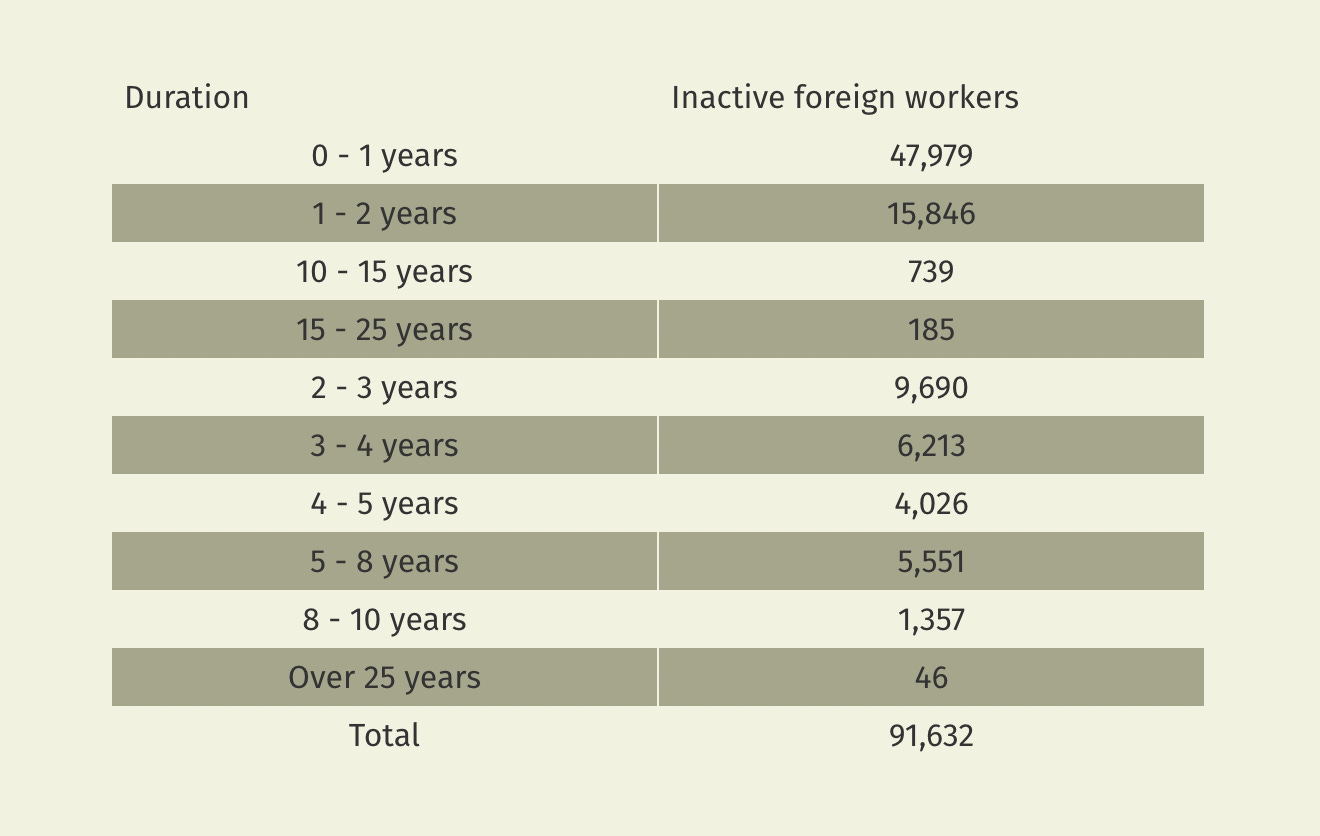Migration fear debunking 3: one in four foreign workers leaves after a year, another 25% leaves after four
They come to do the jobs we need but won’t work, then leave. But they still get scapegoated
Now that we are in preparation for the European season of electioneering (May 2024) get ready for a wholesale shift of national problems onto foreign workers and asylum seekers… we’ve had a few soupçons of it already in the past week, so get ready for the extensive tasting menu of the coming months.
Almost half of Malta’s non-Maltese workforce has been on average employed for just 1 year, before upping sticks and leaving the island.
Data presented in the House of Representatives shows that over 48,000 foreign workers employed in Malta between 2013 and 2023 spent just 12 months in employment.
They represented 25% of the total workforce of 190,000 of foreign workers over the same decade, a sign that one in every four of these workers pass through Malta for non-permanent employment.
Who are they? Probably transient workers from all corners of the world, not just EU but also non-EU workers. They will do the first job available, usually low-paid, before deciding whether Malta is a place they can lay their roots in: is it welcoming? Can they afford the high rents? Is their salary going to stay the same forever? Can they improve their lot? Or is their foreignness and skill-set confining them to a low-grade job? I remember once when the waiters inside cafés would be Europeans - Spanish, Italians, or Eastern Europeans. Now it is workers from the subcontinent and other Asian countries that are doing the low-paid jobs: driving public transport, manning supermarket counters, serving customers in cafés and restaurants.
But the effects of such temporary employment will be felt by those who complain of infrastructural pressures from migrant labour, language barriers, and problems inside communities which lack cohesion. Make no mistake: this will be the undercurrent of the European election season in 2024 for Malta… watch out for the first waves of this gentle racist swell.
On average, the foreign worker employed in Malta between 2013 and December 2022 spent just over 22 months in continuous employment.
Another 98,664 foreign workers remained active in the Maltese labour market.
Of the cohort of 91,000 workers no longer active, 48,000 spent not more than one year in employment (52%). Just over 1,300 workers spent the entire decade in employment before leaving (1.5%).
Foreign workers in 2013 totalled 13,500 and climbed to over 70,000 by the end of 2022. The greatest leap in foreign employment was in 2018 when workers increased by almost 40% from 29,000 to 40,000. The data is gleaned from the Labour Force Survey, which data does not always accurately include the total number of gainfully occupied workers.
The LFS, however, suggests the average salaries of this foreign workforce remain well below €20,000 in 2022: the mean salary for this large cohort, which includes both EU and non-EU nationals, was €17,000 in 2013, and grew to just over €19,900 in 2022, a 17% increase over 10 years. The figures exclude supplemental incomes from overtime, bonuses or allowances.
The same data also suggests that with a median national income of €16,500 for foreign workers in 2022, a very large segment of this foreign workforce is employed in Malta’s lowest-paying jobs.
Foreign working class
A decade of massive economic growth in Malta marked by the importation of labour from overseas, saw more foreign workers replace a declining share of Maltese workers in the lowest-paid salary bands.
Despite a growth in Maltese workers from 155,000 in 2012, to 174,000 in 2022, the actual number of ‘native’ workers paid less than €20,000 decreased by a sheer one-third – 29.1%.
In 2012 there were 108,000 Maltese nationals earning less than €20,000 a year; a decade later they fell to 77,000. In all other salary bands, there was an increase in the Maltese workforce.
The same data suggests that many of these jobs were directly filled by low-er-paid migrants from outside the Euro-pean Union, even if these numbered just 37,000 in 2022.
So-called third-country nationals totalled just 3,560 in 2012, growing exponentially since then. Yet the largest increases in TCNs were in those salary bands that fall below €20,000: from a mere 3,000 in 2012 (85% of the TCN workforce) to 29,000 (71% of TCN workforce).
The data clearly suggests the slow ‘decline’ in lower-paid working-class jobs for Maltese nationals, was eventually taken up by workers from outside the European Union.







